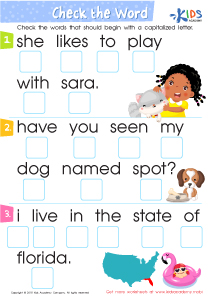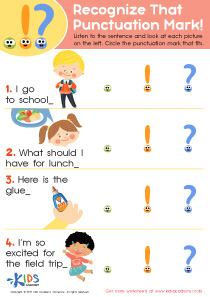Syllable identification Normal Writing Worksheets for Ages 4-8
5 filtered results
-
From - To
Discover our Syllable Identification Normal Writing Worksheets, specially designed for children aged 4-8! These engaging resources help young learners master the concept of syllables through fun, interactive activities. Each worksheet encourages creativity while enhancing literacy skills, making learning enjoyable. Students will improve their reading and writing abilities by identifying syllables in words, tapping rhythmically, and exploring sounds. Perfect for both classroom settings and at-home practice, these worksheets support early literacy development in a structured, age-appropriate manner. Boost your child’s confidence and foundational skills with our vibrant and user-friendly syllable worksheets, ensuring a strong start in their educational journey!
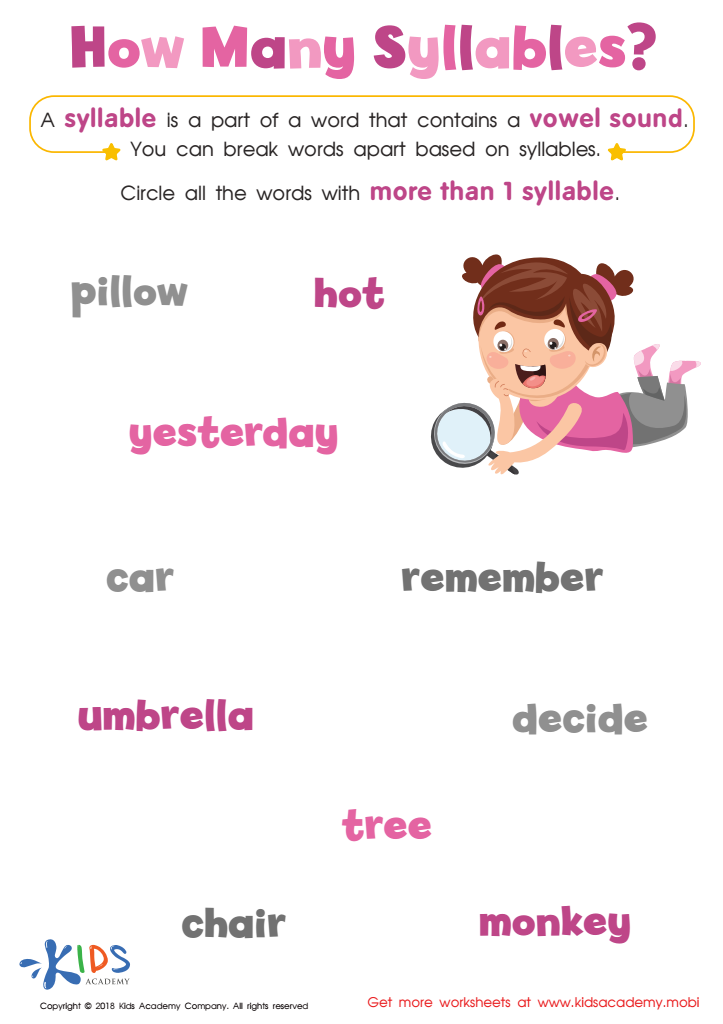

Reading: How Many Syllables Worksheet
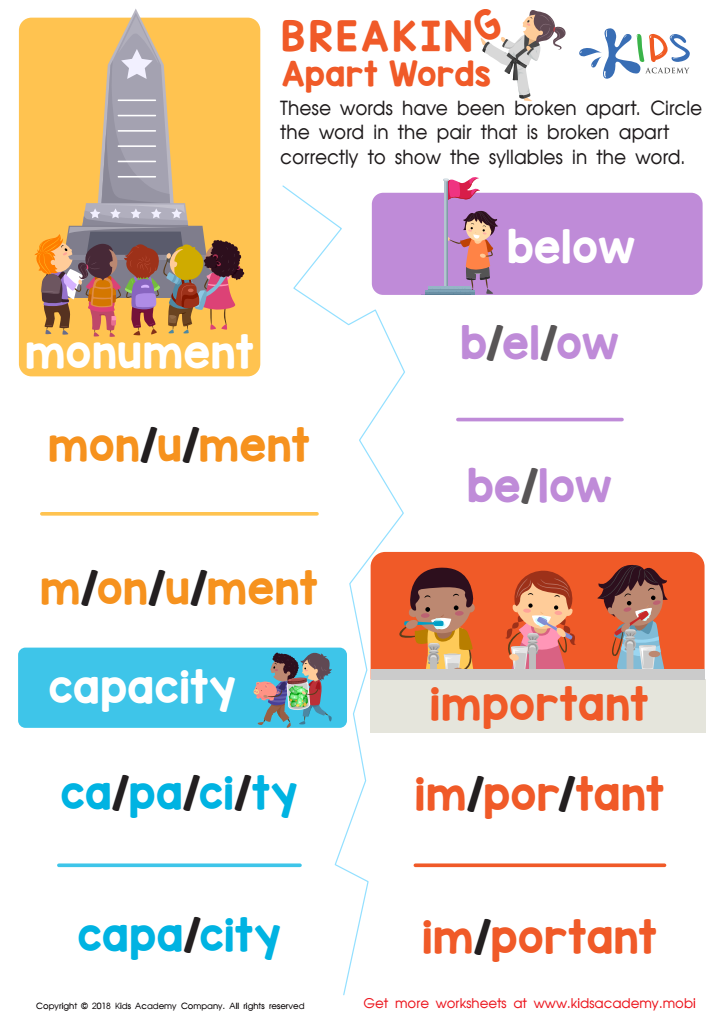

Breaking Apart Words Worksheet
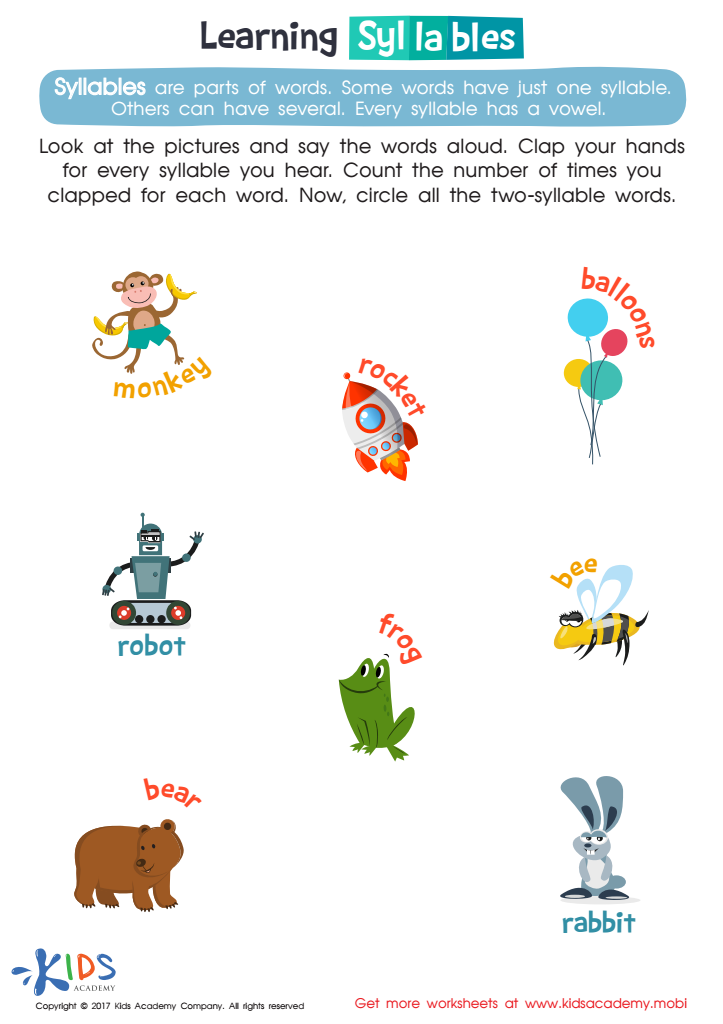

Learning Syllables Word Structure Worksheet


Open Syllable Printable Worksheet
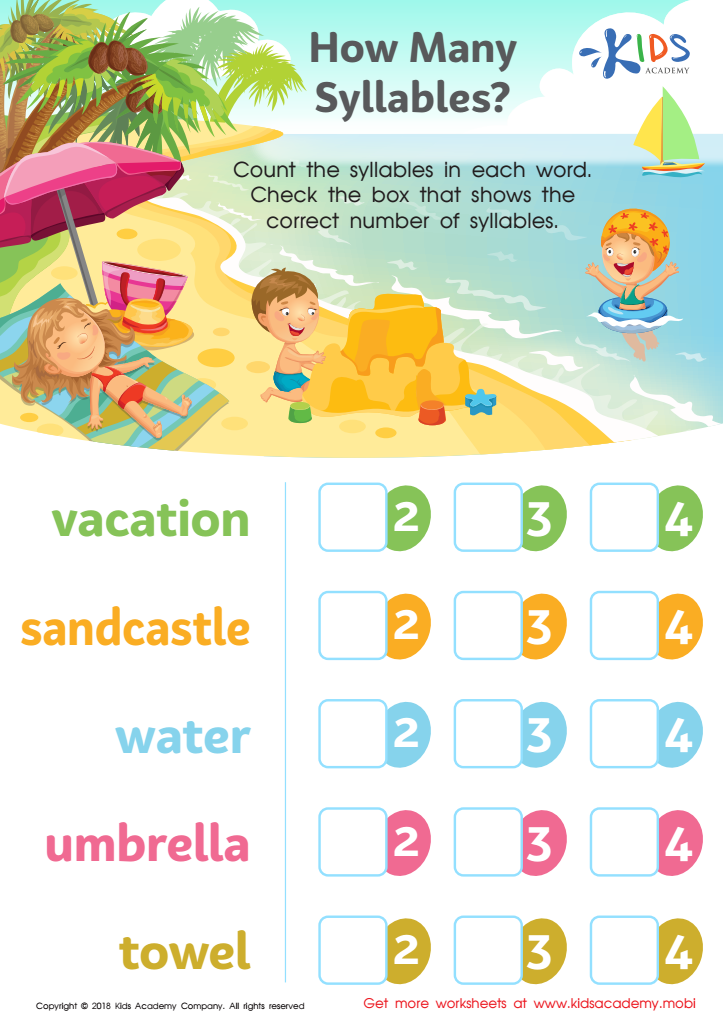

How Many Syllables Worksheet
Syllable identification is a crucial skill for children aged 4-8 as it forms the foundation for proficient reading and writing. Understanding syllables helps young learners break down words into manageable parts, making it easier to decode unfamiliar vocabulary. This skill not only enhances their reading fluency but also builds phonemic awareness, contributing to better spelling and pronunciation.
Parents and teachers should prioritize syllable identification because it directly supports language development. When children can recognize and manipulate syllables, they become more confident in their verbal skills, allowing them to express their thoughts more clearly. Additionally, this skill correlates with improved overall literacy, setting the stage for academic success in later years.
Teaching syllable identification can also provide a fun, engaging learning experience. Activities such as clapping out syllables or using visual aids make the learning process enjoyable, fostering a positive attitude toward reading. Moreover, this foundational skill encourages collaboration between home and school, allowing parents to reinforce what they learn in the classroom.
In summary, focusing on syllable identification is essential for young children as it boosts their reading and writing capabilities, aids in effective communication, and lays the groundwork for continued academic achievement.
 Assign to My Students
Assign to My Students










